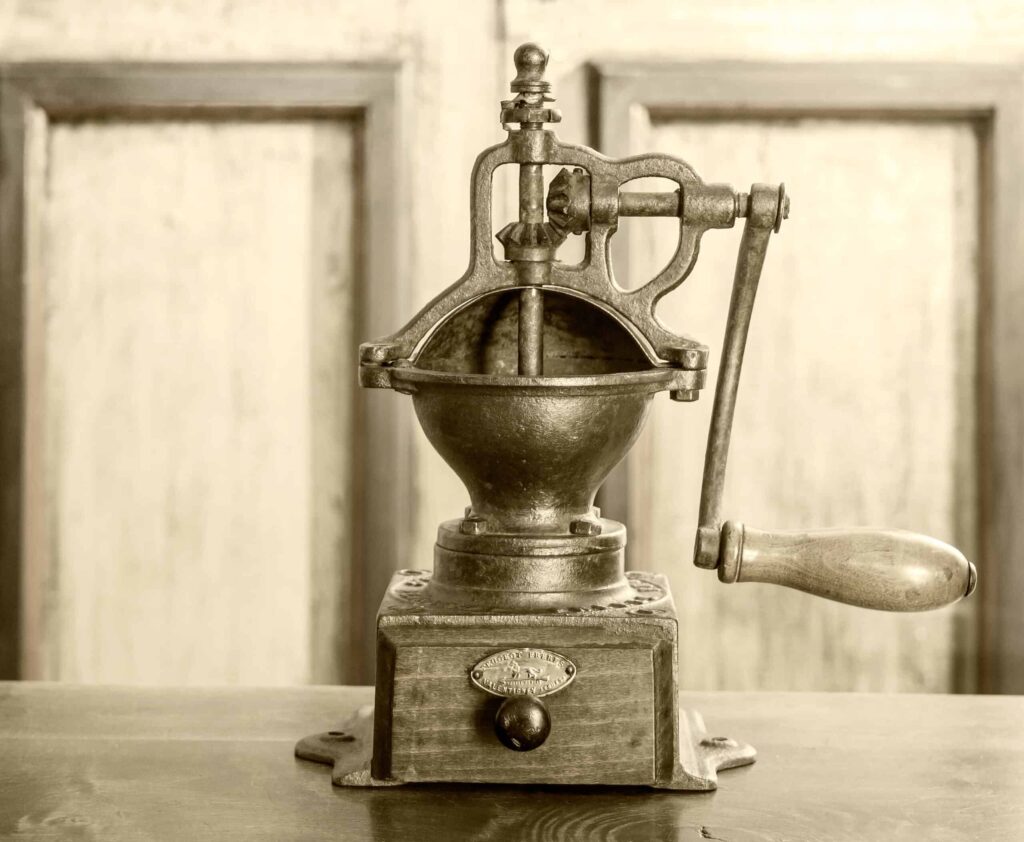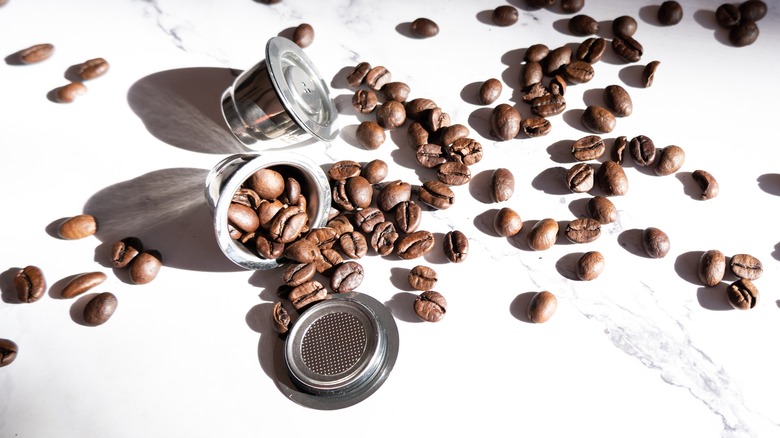Coffee grinders have played a pivotal role in the journey of coffee from its ancient roots to the sophisticated beverage we savor today. These essential tools have evolved dramatically, shaping not only how we prepare coffee but also how we experience it. Understanding the history of coffee grinders offers a fascinating glimpse into the broader history of coffee itself, revealing how innovations in grinding have impacted everything from the simplest cup of joe to the finest espresso shot.
The significance of coffee grinders in the evolution of coffee preparation cannot be overstated. Early grinding methods were rudimentary and labor-intensive, yet they laid the groundwork for the complex and precise techniques used in modern coffee making. Each advancement in grinder technology has brought us closer to the ideal brew, influencing the texture, flavor, and overall quality of coffee.

Moreover, the development of coffee grinders has had a profound impact on modern espresso making. Espresso, with its rich, concentrated flavor, requires a fine and consistent grind that can only be achieved with advanced grinders. The precision and reliability of today’s grinders ensure that every espresso shot is brewed to perfection, showcasing the art and science of coffee making.
In this article, we’ll journey through the history of coffee grinders, from their ancient beginnings to their modern incarnations.
We’ll explore how each era’s innovations have contributed to the way we enjoy coffee today, highlighting the critical role grinders have played in transforming coffee preparation into the sophisticated practice it is now.

Historical Overview and Evolution of Grinding Techniques
The journey of coffee grinding techniques is a testament to human ingenuity and our enduring love for coffee. From rudimentary tools to sophisticated machines, each era has seen significant advancements that have revolutionized the coffee brewing process. Let’s explore the key milestones in the evolution of coffee grinding techniques.
Early Methods: Mortar and Pestle
In the earliest days of coffee preparation, grinding was a labor-intensive task. Ancient civilizations used mortar and pestle to crush coffee beans. This method, though effective, required considerable effort and time. The result was a coarse grind, which was suitable for the simple brewing methods of the time, such as boiling coffee in water.

Introduction of Manual Grinders
The 17th century marked a significant turning point with the introduction of the first manual coffee grinders. These devices, often made of wood and metal, featured a handle that turned a set of burrs to crush the beans. Manual grinders offered a more consistent grind compared to the mortar and pestle, and their portability made them popular among coffee enthusiasts. The Turkish coffee grinder, with its intricate designs and fine grinding capability, became particularly famous during this period.

Transition to Electric Grinders
The 20th century saw the dawn of electric coffee grinders, a game-changer in the world of coffee preparation. The first electric grinders were introduced in the 1920s and quickly gained popularity for their efficiency and convenience. These grinders could produce a consistent grind at the push of a button, significantly reducing the time and effort required to prepare coffee.
Electric grinders continued to evolve, incorporating advanced technologies to enhance grinding precision. Burr grinders, which use two revolving abrasive surfaces, became the standard for achieving a uniform grind. This consistency is crucial for brewing methods like espresso, where even minor variations in grind size can affect the flavor and quality of the coffee.

Modern Innovations
Today, coffee grinders have reached new heights of sophistication. High-end models offer features such as adjustable grind settings, digital timers, and dosing control, allowing coffee lovers to fine-tune their grind to perfection. Some grinders even incorporate smart technology, enabling users to control the grind via smartphone apps.
These modern innovations have not only improved the quality of coffee but have also made the grinding process more accessible and user-friendly. Whether you’re a casual coffee drinker or a seasoned barista, there’s a grinder out there to suit your needs.

Key Historical Milestones
The history of coffee grinders is marked by several key milestones that have significantly influenced the way we grind coffee and, consequently, how we enjoy it. Here are some of the most notable developments, inventions, and figures that have shaped the evolution of coffee grinding:
1. Mortar and Pestle (Early Civilizations)
The use of mortar and pestle for grinding coffee dates back to the earliest days of coffee consumption. This simple yet effective method allowed ancient coffee drinkers to crush coffee beans into a coarse powder, suitable for brewing methods of the time. While rudimentary, this technique laid the foundation for more advanced grinding methods.

2. Turkish Coffee Grinder (17th Century)
The Turkish coffee grinder, introduced in the Ottoman Empire, was one of the earliest manual grinders designed specifically for coffee. These grinders were often intricately decorated and capable of producing a very fine grind, essential for making traditional Turkish coffee. Their introduction marked a significant step forward in the quest for a consistent and fine grind.

3. The First Patented Coffee Grinder (1798)
In 1798, Thomas Bruff, a dentist from Maryland, received the first patent for a coffee grinder in the United States. His design featured a wall-mounted, hand-cranked grinder that used a set of burrs to crush the beans. This invention was a precursor to many of the manual grinders that followed, offering a more consistent grind than earlier methods.

4. Peugeot’s Manual Grinder (1840)
Peugeot, now known for its cars, began as a manufacturer of coffee grinders in the 19th century. In 1840, they introduced a manual grinder with a steel burr mechanism, which significantly improved grinding consistency. Peugeot’s grinders became popular worldwide and set a high standard for manual coffee grinders.
5. Electric Grinders (1920s)
The introduction of electric coffee grinders in the 1920s revolutionized coffee grinding. These grinders offered unprecedented convenience and efficiency, making it easier than ever to achieve a consistent grind. Brands like Hobart and KitchenAid led the way with electric models that quickly became household staples.

6. Burr Grinders (1950s Onwards)
The development and popularization of burr grinders in the mid-20th century represented a major leap forward. Unlike blade grinders, which chop beans unevenly, burr grinders use two abrasive surfaces to crush beans to a uniform size. This consistency is crucial for modern brewing methods, especially espresso.

7. Digital and Smart Grinders (21st Century)
In recent years, coffee grinders have embraced digital and smart technologies. Modern grinders feature precise grind settings, digital timers, and even app integration, allowing for unparalleled control over the grinding process. Brands like Baratza, Breville, and Mazzer are at the forefront of these innovations, catering to both home enthusiasts and professional baristas.

Each of these milestones has profoundly impacted coffee culture and consumption. The evolution from manual to electric grinders, and from blade to burr mechanisms, has allowed coffee drinkers to enjoy more consistent and high-quality brews. These advancements have made it possible to appreciate the nuanced flavors of different coffee beans, contributing to the rise of specialty coffee culture.
Furthermore, the development of precise and reliable grinders has been instrumental in the growth of espresso culture. The fine and uniform grind required for espresso is only achievable with advanced grinders, and the rise of these machines has paralleled the popularity of espresso-based beverages worldwide.
Influence on Modern Espresso Making
The history of coffee grinders is deeply intertwined with the evolution of espresso making. From the rudimentary tools of ancient times to the sophisticated machines of today, each technological advancement in grinding has played a crucial role in perfecting the art of espresso. Let’s explore how these developments have shaped modern espresso making and the technologies that make it possible.

Early Foundations: Consistency and Precision
The journey towards the perfect espresso grind began with the transition from mortar and pestle to manual grinders. The Turkish coffee grinder, introduced in the 17th century, was one of the first to offer a consistent and fine grind, essential for brewing methods that demanded precision. This early emphasis on grind consistency laid the groundwork for future innovations.
The Advent of Burr Grinders
The introduction of burr grinders in the mid-20th century was a game-changer for espresso making. Unlike blade grinders, which chop beans unevenly, burr grinders use two abrasive surfaces to crush beans to a uniform size. This uniformity is crucial for espresso, where even slight variations in grind size can significantly impact the extraction process and flavor profile.
Burr grinders allowed baristas to achieve a precise and consistent grind, leading to more reliable and high-quality espresso shots. The ability to adjust grind size with precision became a key factor in controlling the flavor and strength of espresso, paving the way for the artisanal coffee movement.
Technological Advancements: Digital Precision
In the 21st century, coffee grinders have embraced digital and smart technologies, further enhancing the precision and consistency of espresso grinding. Modern grinders feature digital timers, adjustable grind settings, and even app integration, allowing baristas to fine-tune every aspect of the grinding process.
Brands like Baratza, Breville, and Mazzer have introduced grinders with micro-adjustment capabilities, enabling users to make tiny changes to the grind size for optimal espresso extraction. These advancements ensure that every shot of espresso is brewed to perfection, with the right balance of flavors and aromas.
The Role of Conical and Flat Burrs
Another significant development in grinder technology is the use of conical and flat burrs. Conical burrs, with their cone-shaped design, are known for producing a consistent grind with minimal heat buildup, preserving the delicate flavors of the coffee. Flat burrs, on the other hand, offer a highly uniform grind size, which is ideal for espresso.
The choice between conical and flat burrs depends on personal preference and brewing style, but both types have contributed to the evolution of espresso making. The ability to choose the right burr type and adjust the grind size with precision has empowered baristas to experiment and innovate, leading to new trends and techniques in espresso preparation.
Historical Developments and Current Trends
The influence of historical grinding techniques on modern espresso making is evident in the design and functionality of today’s grinders. The quest for consistency and precision that began centuries ago continues to drive innovation in grinder technology. Current trends, such as the rise of specialty coffee and the demand for single-origin espresso, are built on the foundation of these historical advancements.
Moreover, the integration of smart technology in grinders reflects a broader trend towards automation and customization in the coffee industry. Baristas and home enthusiasts alike can now achieve professional-quality results with ease, thanks to the sophisticated features and user-friendly interfaces of modern grinders.
Conclusion
The history of coffee grinders has profoundly influenced the development of modern espresso making. From the early manual grinders to today’s digital and smart machines, each technological advancement has brought us closer to the perfect espresso shot. The precision and consistency achieved through these innovations have not only elevated the quality of espresso but also expanded the possibilities for creativity and experimentation in coffee brewing.
Disclosure: Our blog contains affiliate links to products. We may receive a commission for purchases made through these links. However, this does not impact our reviews and comparisons. We try our best to keep things fair and balanced, in order to help you make the best choice for you.







One Response